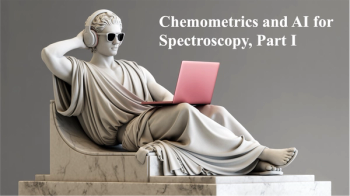
- Application Notebook-02-01-2012
- Volume 0
- Issue 0
IC–ICP–MS Speciation Analysis of As in Apple Juice
In this study, apple juice samples are analyzed by IC–ICP–MS to determine the concentration of six arsenic species: the two inorganic, and highly toxic, species (As (V) and As [III]) and four organic species (arsenobetaine [AsB], arsenocholine [AsC], monomethylarsonic acid [MMA], and dimethylarsinic acid [DMA]).
In this study, apple juice samples are analyzed by IC–ICP–MS to determine the concentration of six arsenic species: the two inorganic, and highly toxic, species (As (V) and As [III]) and four organic species (arsenobetaine [AsB], arsenocholine [AsC], monomethylarsonic acid [MMA], and dimethylarsinic acid [DMA]).
General Analytical Conditions
An iCAP Qc ICP-MS (Thermo Fisher Scientific, Bremen, Germany) was equipped with a Peltier cooled cyclonic PFA spray chamber and a PFA-LC nebuliser (Elemental Scientific, Omaha, Nebraska). A demountable torch was equipped with a 2 mm i.d. quartz injector.
Chromatographic separations were carried out using a Dionex ICS-5000 ion chromatogram (Thermo Fisher Scientific, Sunnyvale, California).
The column outlet from the ICS-5000 was directly connected to the PFA-LC nebulizer. Full bidirectional communication between the instruments was achieved using a trigger cable. All data evaluation was performed using the tQuant features of the ICP-MS Qtegra software platform.
Sample and Calibration Solution Preparation
Four different apple juices were bought in a local supermarket and the total arsenic concentration was first determined after dilution of 1 mL juice in 7 mL of ultrapure water/2 mL of 2% nitric acid. Samples that showed the detectable presence of total arsenic were passed for subsequent speciation analysis.
Figure 1: Model separation of six arsenic species, each at 0.45 ng/g in dilute HNO3.
Results and Discussion
Results from two of the four apple juices where arsenic was detected are summarized in Table I. Method detection limits (MDLs) for the arsenic species were calculated from three times the standard deviation of four repeat blank injections. Total arsenic concentrations for the two samples also are shown.
Table I: Arsenic species concentrations, method detection limits (MDLs), and total concentrations in two of the apple juice samples analyzed. All concentrations have units of ng/g.
The trace amounts of arsenic found in this study fit well with a typical range of arsenic concentrations in apple juices (between 2 and 6 ng/g) as determined by the United States Food and Drug Agency (US FDA) in a previous study (1).
Conclusion
A new IC-ICP-MS method for the separation and quantification of six arsenic species in apple juice has been developed. The combination of ion chromatography with ICP-MS has been shown to be a powerful tool for the detection of low concentrations of arsenic species in fruit juices.
Although there is no legislative limit for arsenic species in fruit juices currently, the detection limits obtained by this method (~5 pg/g) far exceed those in similar sample types, for example bottled water (FDA limit set at 10 ng/g).
References
(1) FDA arsenic in apple juice results:
Thermo Fisher Scientific
5225 Verona Road, Madison, WI 53711
tel. (800) 532-4752; Fax: (608) 273-5046
Website:
Articles in this issue
almost 14 years ago
The Orbis Micro-XRF Analyzer Seriesalmost 14 years ago
Benchtop WDXRF for Cement Analysisalmost 14 years ago
Revisiting IR Transmission Sampling of Polymersalmost 14 years ago
Wire Grid Polarizer – 10% Improvement in PBS EfficiencyNewsletter
Get essential updates on the latest spectroscopy technologies, regulatory standards, and best practices—subscribe today to Spectroscopy.

